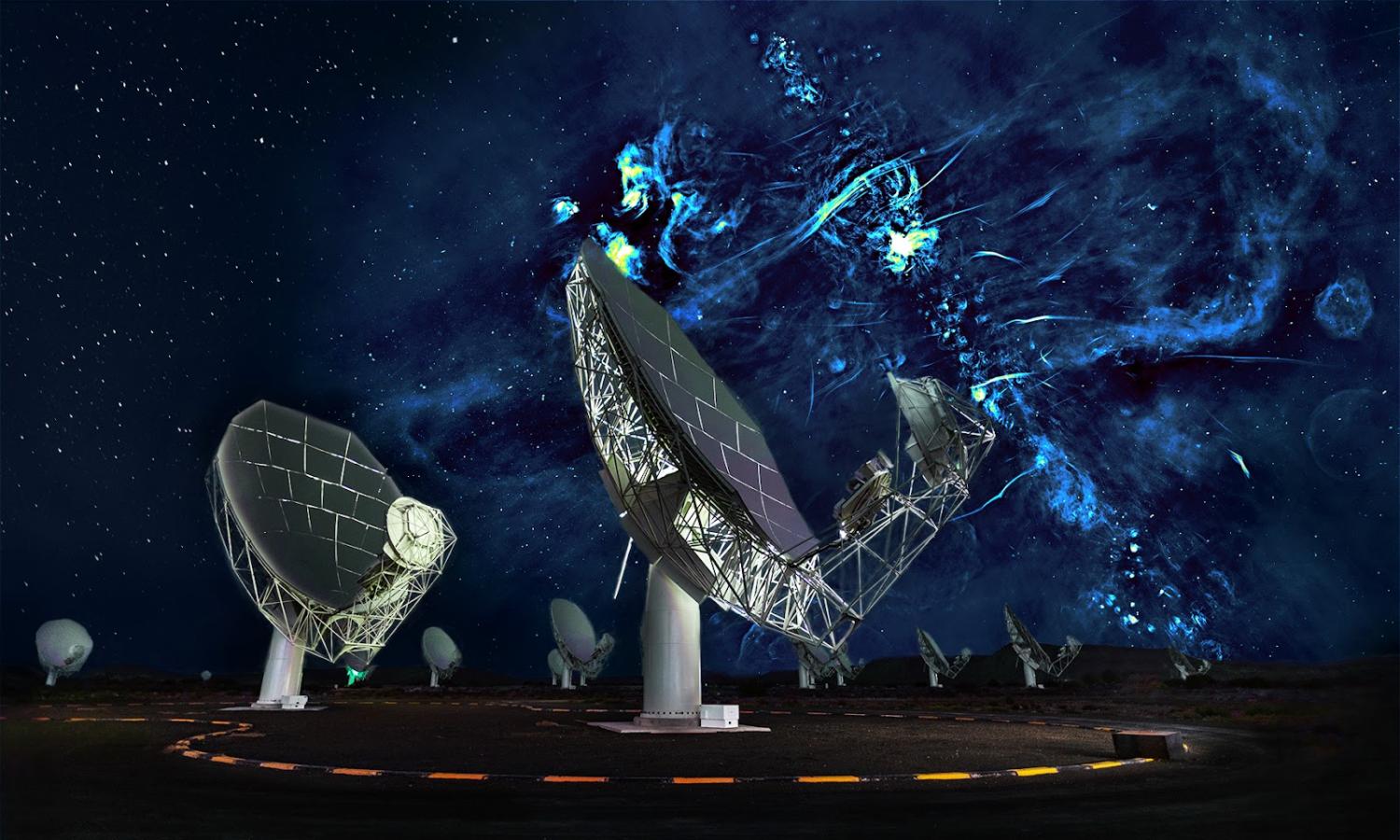Unlocking MeerKAT’s full potential: Italy’s investment in Band 5 through INAF
Within this framework, INAF launched the STILES project (STrengthening the Italian Leadership in ELT and SKA) to reinforce Italy’s leadership in astrophysics through the development of cutting-edge technologies and laboratories for the next-generation astronomical facilities: the European Extremely Large Telescope (ELT) and the SKA Observatory.
One of the flagship initiatives within STILES is a strategic collaboration between INAF and the South African Radio Astronomy Observatory (SARAO) to enhance the high-frequency capabilities of MeerKAT, a world-class SKA precursor radio telescope in South Africa. This investment funds the development and deployment of 64 Band 5B receiver systems (conceived in Italy and produced in Germany and South Africa) on MeerKAT, extending its frequency range and unlocking powerful new scientific opportunities.
The project consists of two main phases. Phase I, funded under the PNRR framework and running from 2024 to 2025, focuses on the procurement and initial integration of 64 SKA Band 5B receiver systems fully compatible with the MeerKAT infrastructure. This phase includes some crucial upgrades to the telescope’s cryogenic infrastructure, particularly the helium compressor system, to enable simultaneous cooling of multiple receivers and deliver 64 high-end digitisers, necessary for converting radio to digital data for further processing. Phase II, planned for the period following 2025, will complete the deployment of the Band 5B systems. This includes final installation, integration, and complete scientific and technical commissioning of the receivers on the MeerKAT antennas. The ultimate goal is to prepare MeerKAT for seamless incorporation into the SKA-MID core, ensuring that its enhanced capabilities are fully operational ahead of SKA’s first light.
The MeerKAT Band 5B initiative is more than a mere technical upgrade: it's a strategic move that positions Italy and INAF as core contributors to the SKA's scientific and technological landscape. STILES investment towards the SKA project is also generating significant benefits in Italy by developing and upgrading next-generation laboratories for radio receiver development; establishing national testing facilities for instrument validation, significant investments in new IT infrastructures essential for processing next-generation astronomical data, PhD and postdoc programs aligned with SKA science goals, and training the next generation of scientists and engineers.

A Memorandum of Agreement and detailed project plan between INAF and SARAO were signed in 2024, formalising the international partnership and laying the groundwork for efficient implementation. INAF is also a partner in the MeerKAT+ extension, initiated by SARAO and Max-Planck-Gesellschaft, expanding the array from 64 to 80 antennas. Since 2020, INAF has contributed to local monitoring and control software and the development of the new correlator, supporting enhanced sensitivity and resolution for galaxy evolution studies.
Implementing Band 5B capability at MeerKAT will be revolutionary in a scientific sense. MeerKAT can undertake investigations of the Universe at higher radio frequencies and with better resolution than we have ever achieved, opening up new frontiers into crucial processes such as cosmic magnetism, star and planetary system formation, and molecular gas investigations in distant galaxies.
This critical advancement also greatly enhances Italy's involvement in SKA precursor science and its leadership in exciting new areas of research delving into topics such as the detection of complicated biomolecules, the evolution of galaxies, and the feedback processes from active galactic nuclei. Furthermore, the high-frequency, high-resolution data of the MeerKAT Band 5B will have considerable synergies with other leading observatories such as ALMA, JWST, enabling multi-wavelength and multi-facility astrophysical investigation.
Italian astronomers already lead many high-frequency science programs. The new receivers would dramatically enhance this leadership by granting them early access to SKA-grade observations and allowing new international partnerships.
This comprehensive strategy strengthens Italy's leadership in astrophysics, ensuring our country is at the forefront of research and development for future telescopes.
“Enhancing a world-class scientific facility and providing further evidence of Italy's commitment to sustained international leadership in radio astronomy was the stated aim of the STILES-funded MeerKAT Band 5B project. The project provides a clear example of how strategic public investment, via the PNRR, can have a long-lasting impact by developing the national space ecosystem and partnerships, and can lead to transformative science. INAF considers the addition of the MeerKAT Band 5B to the Radio Astronomy program to be a critical strategic step toward building resilience, innovation, preparing the next generation of scientists and engineers poised to lead astrophysics into the future," said Grazia Umana, MeerKAT Band 5B Project Coordinator and Research Manager at INAF.




